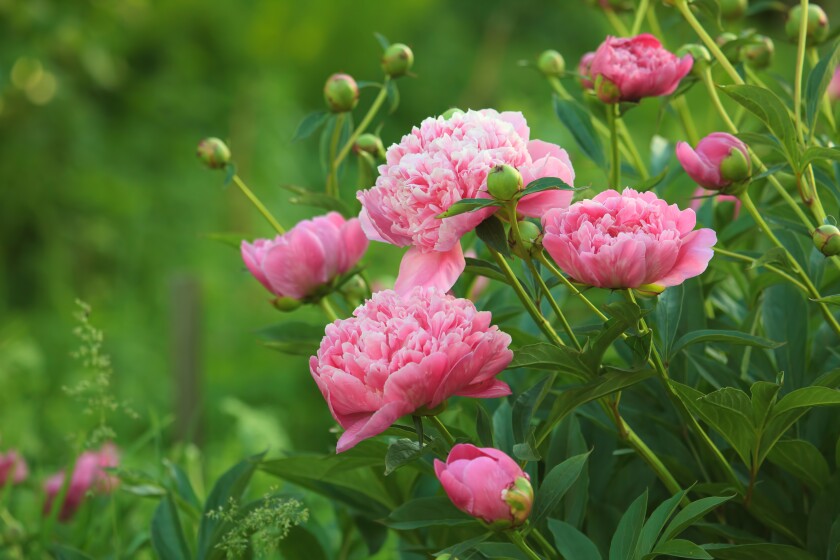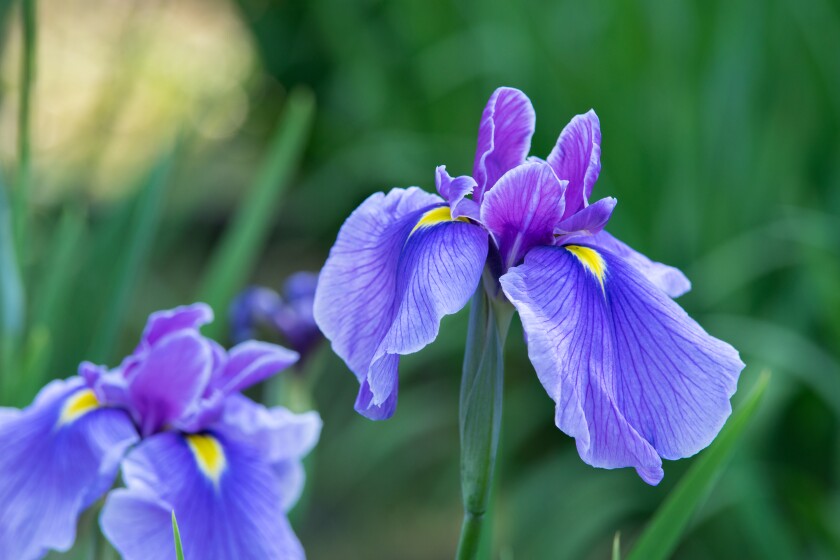FARGO — What did the young plant say to the old plant during a disagreement? OK, bloomer.
In the world of plants, perennial flowers are enjoying the same upswing in popularity as houseplants and vegetable gardening. Plant breeders have been busy, and garden centers are filled with hot new perennial cultivars in exciting colors, textures and heights.
ADVERTISEMENT
Deciding between exciting choices is a challenge, and so is deciding how to arrange them in a flower garden or landscape.
The following are tips for designing a perennial flower garden, whether you’re starting from scratch or expanding an existing flower bed.
- Plan the size and shape of the perennial garden. To allow space for several rows of varying heights and shapes, 3 feet or more front-to-back is recommended. Most of us wish we had devoted more space when first designing our gardens.
- Most perennial flowers grow with an informal, naturalistic habit which combines well with gracefully curved flower bed lines, rather than straight rectangular edges. A garden hose makes a flexible tool to plan curved flower beds.
- To make a flower bed from existing lawn, the sod can be stripped with a rented sod cutter or dug by hand. Or you could apply glyphosate, wait about 10 days for browning, then rototill. Grass can also be smothered with cardboard or black plastic.
- Take time to eliminate perennial weeds like thistles and quackgrass. Digging and rototilling rarely eliminate deep-rooted weeds that can regenerate from a tiny rhizome sprig remaining in the soil. Spray with glyphosate and wait a week before tilling, or use the smothering technique.
- Most perennials require well-drained soil, rather than heavy, soggy soil. Mounding the bed, even slightly, helps divert excess water.

Iris is a common sight in perennial gardens. inomasa / Getty Images / iStockphoto - Perennials thrive in soil rich in organic material. Heavy clay soil is the opposite of what most need. If starting a new flower bed, incorporate 2 inches or more of peat moss, compost or manure into the entire area. For an established flower garden, add the material around the existing plants.
- Observe the flower garden to see how much direct sunshine it receives, so you’ll know the types of plants to select. Six hours or more of direct sunshine is considered full sun. Four to six hours of sun is termed part sun or part shade. Less than four hours of sunshine per day is considered shade. Light requirements are listed on most plant tags.
- A perennial that blooms from spring until fall hasn’t been created. Instead, each perennial type blooms during a specific part of the growing season, usually for about two to six weeks. The flower bed will be in continuous bloom by combining types that bloom in spring, early summer, midsummer, late summer and fall. Plant tags tell the bloom season.
- Avoid the temptation to make perennial beds appear full immediately after planting. Follow spacing guidelines on plant tags, giving each plant the footprint needed for development. Most perennials require two to three years to reach their potential.

Avoid the temptation to make new perennial beds appear full immediately, and instead give plants time to reach their full potential. robertprzybysz/Getty Images/iStockphoto - If new perennial flower beds look sparse, interplant with annual flowers for the first year or two. Even established perennial beds benefit from adding the season-long color of annuals
- Taller perennials should naturally be located mostly to the back, but bringing a few forward adds interest.
- Create a solid backbone of long-lived perennials like peony, iris, daylily, phlox, hosta, lily and others. Some perennials don’t survive longer than four or five years, but are still important additions to the flower garden, such as echinacea, chrysanthemum, delphinium, and coreopsis.
- Planting in groupings of three or five of a type or color can increase impact.
- Shrubs like hydrangea and spirea are good additions to the flower garden. Evergreens like creeping juniper add texture and color.
- Add ornamental grasses. There are many types of well-adapted grasses besides Karl Foerster, which is almost too common. Grasses add movement and many have distinctive seed heads adding multi-season interest.
- Add a bench, statue or artwork for interest.
Don Kinzler, a lifelong gardener, is the horticulturist with North Dakota State University Extension for Cass County. Readers can reach him at donald.kinzler@ndsu.edu.












